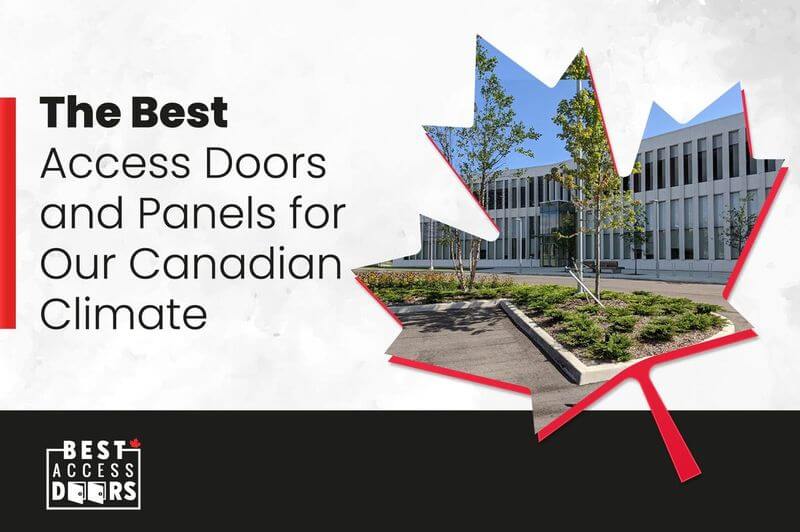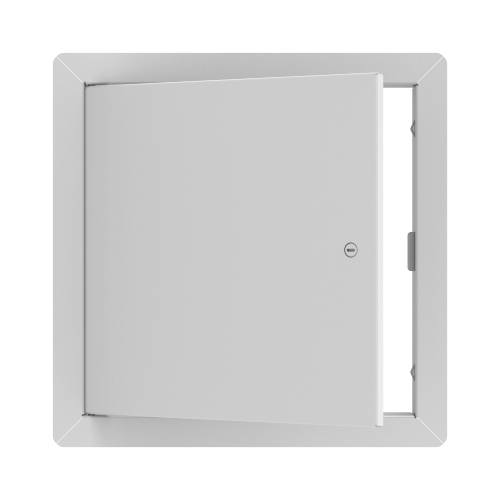5 Ways Climate Change Impacts Construction That You Need to Know Posted by Best Access Doors Canada on 20th Feb 2024
Climate change is reshaping the world we live in, influencing weather patterns, sea levels, and overall environmental conditions. As a result, industries across Canada face new challenges—with the construction sector no exception. The impact of climate change on construction is profound, affecting everything from project planning to the materials used.
Climate resilience in construction refers to the capacity of buildings and infrastructure to anticipate, prepare for, respond to, and recover from the adverse impacts of climate change.
A holistic approach to building is essential for overcoming the challenges of the future. In this article, we will explore five ways climate change is transforming the construction landscape.
#1 Increased Extreme Weather Patterns and Events
One of climate change's most immediate and tangible impacts on construction is the increased frequency and intensity of extreme weather events. Unpredictable, heavy rainfall throws off timelines by preventing excavation and foundation work. Severe winter storms cause unending snowfall, impeding construction activity—while shutting down highways and the supply chain for even more delays.
Recently, floods, landslides, and wildfires are becoming more prevalent, posing significant challenges for construction projects. Builders now need to consider the heightened risk of damage and plan for resilient structures that can withstand these extreme events. These changing weather patterns must also be incorporated into the planning stage of development, with the capability for easy retrofitting and upgrades due to ever-changing, unstable weather conditions.
#2 Increased Costs Due to Maintenance and Repair
Climate change is associated with increased intensity and frequency of extreme weather events such as rising water levels, landslides, floods, and wildfires. An example would be the recent weather systems experienced from coast to coast, which brought severe winter conditions and record lows in Victoria, Edmonton, and Calgary, with major snowstorms hitting regions of Quebec, Ontario, and the eastern coast.
Commercial, industrial, and residential buildings, in addition to unprepared infrastructure, would have been most adversely affected by these events. They may now have substantial costs associated with the maintenance and repair of structures and utilities. Although such events are unprecedented until now, we can all agree that climate change is rampant, and the effects are impacting our bottom lines and well-being.
Geographical and environmental factors are now more important than ever in the planning and construction phases—not only to mitigate the costs of repairs but also to enhance peace of mind during trying times.
The changing climate we are experiencing requires an adaptive design strategy that considers past events while taking a proactive stance to anticipate future problems. By considering these factors in the present, we can brace ourselves for the future.
#3 Overtasked HVAC Systems and Higher Utility Costs
Extremes in temperature require responsive and dependable central air and heating systems to combat them. However, unpredictable weather conditions overtask and overwhelm HVAC systems that are unprepared—especially when they are outdated or inefficient.
In the winter, frozen pipes and coils, thermostats, and compressor problems are just as much of an issue as overheating components, clogged air filters, and condensate drainage issues in the summer. Add to this the costs associated with cooling or warming your buildings with central systems that are constantly running and consuming energy while contributing more greenhouse emissions into the atmosphere.
Your access products should not be your HVAC system’s weakest link, and a high-quality insulated access door is required to ensure your systems remain in perfect order. Whether you seek an interior or exterior access door for HVAC inspections and more, our BAC-BXP Exterior Access Door - Plaster Bead Flange is your ideal solution. This model features a 1.6” PIR insulated cover, contributing a thermal resistance value of 11 to your structures to minimize heat transfer.
Using reliable access solutions is an economical and cost-effective strategy for retrofitting HVAC systems with upgraded controls, energy-efficient equipment, improved insulation, and more. The right materials, such as BAC-BXP, are critical for ensuring the long-term sustainability, safety, and functionality of buildings and infrastructure.
#4 Design Adaptations for Climate Resilience
Understanding the impacts of climate change leads to a mindful approach being applied at all stages, from pre- to post-construction. Evaluating the climate risks specific to the project site, including the potential for floods, storms, wildfires, and rising sea levels, allows professionals to anticipate adapting and applying innovative designs.
Up to 600,000 citizens along Canada’s east coast will potentially be affected by rising sea levels due to heavy melting among Antarctica’s melting glaciers and sinking lands. This issue requires an immediate response and adaptation. Resilience planning and adaptations lead to innovative solutions like seawalls and living shorelines.
Innovative designs require innovative solutions such as the BAC-BXP, which excels in exterior applications, providing saltwater and corrosion resistance with 24-gauge steel and extruded aluminum. With continuous EPDM gaskets adhered around its perimeter, this model is unyielding, maintaining ASTM E 331-00 standards against air and water penetration.
The challenge of climate change has required us to respond with ingenuity out of necessity. These are the adaptations required to evolve. Innovation and adaptation require flexibility, and solutions such as BAC-BXP are as flexible and adaptive as they come.
#5Climate Change Affects Policies and Economic Incentives
As a world leader in climate change initiatives, Canada is on the front lines of several programs that promote sustainable building practices. Heavy investment into institutions such as the Climate Resilient Built Environment (CRBE) initiative will unite Canada’s construction industry for more climate-resilient construction practices. With a focus on nature-based solutions, restoration efforts, and infrastructure improvements, CBRE will help establish new industry-wide codes, specifications, and standards.
Such institutions' codes, specifications, and standards result in economic incentives and more sustainable building practices. In the residential construction sector, homebuyers are willing to pay substantially more for ‘green homes’ certified with environmentally friendly materials.
The response was using more sustainable, LEED- and ENERGYSTAR-certified products and fewer greenhouse emissions. LEED-certified products contain at least 25% post-consumer recycled materials, such as our BAC-BXP Exterior Access Door – Plaster Bead Flange. Several incentives, such as the Home Renovation Tax Credit (HRTC), offer the potential for substantial savings and more efficient homes across the nation.
We Will Go the Extra Mile for You!
At Best Access Doors Canada, we have built a proud reputation of excellence based on our extensive product offerings and an exceptional level of service.
You can expect fast delivery without hassles with distribution centers from coast to coast. Experience the difference yourself and build better with the Best!






